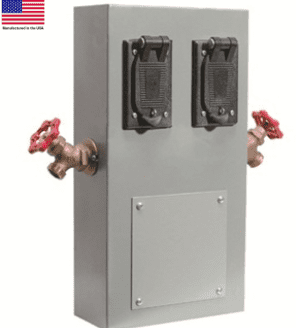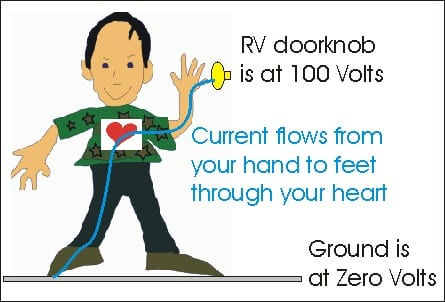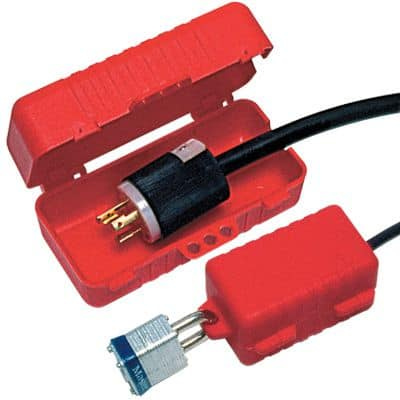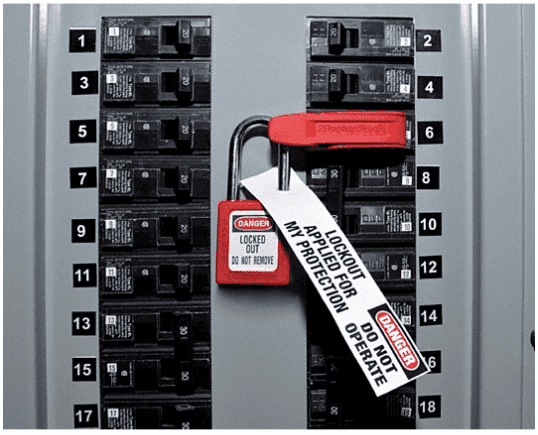Remember to unplug your RV before working on the electrical system
Never rely on simply turning off the circuit breakers. That could be a deadly mistake...
Dear Readers:
Here is an important reminder from a reader to unplug your RV from the pedestal outlet when working on any internal RV wiring. Never rely on simply turning off the circuit breaker on the pedestal while still having your shore power cord plugged in.
What happened? (from a reader)
Something odd and dangerous happened to me yesterday that I had never considered. I needed to replace a bad breaker in my trailer, so I turned off all the breakers on the campground pedestal, and also tested the trailer breaker box to double-check that there was no 120v power in the trailer.
I was partially done with the project, and out of the corner of my eye, I saw someone behind my trailer. Apparently, one of the breakers on my pedestal controlled an outlet (on a different pedestal) on a tent spot behind me. The person in that spot called the campground because they had lost power, and the maintenance guy came over to fix the problem by turning on the breakers.
Wow, if I hadn’t noticed him, it could have ended badly for me. In the future, I will actually be unplugging my trailer from the pedestal to give one more layer of protection.
Why was this dangerous?
Well, if you’re working on the wiring inside of the RV (like changing a circuit breaker), you’ll typically be handling bare conductors.
Now, I’ve been working in electrical panels for more than 50 years. I mentored under the local VocTech Master Electrician instructor. I was taught to assume that ALL wires were electrified, and never put two hands in a panel. So, I was taught to keep my unused hand in my back pocket to avoid a hand-to-hand shock.
That’s because a hand-to-hand shock is extremely dangerous. The fault current will go through your chest, and your heart is right in the middle of it.
Always unplug and keep control of the plug
What the reader did was just turn off the circuit breaker in the pedestal and assume that his RV would remain de-energized. What he didn’t count on was someone walking up to the pedestal and flipping the circuit breaker on. That could have been a deadly mistake when he didn’t unplug his RV.
So, the first rule is, ALWAYS unplug your RV from any power source. NEVER rely on just a circuit breaker to keep you safe.
At the very least, unplug the RV from the pedestal and bring the shore power plug up next to your RV. That way nobody accidentally plugs it back in. If you need additional safety from accidentally being plugged in, then there’s LOTO devices for power cords.
What is a LOTO (Lock Out/Tag Out)?
Another thing I learned when doing industrial power back in the ’70s is that you can’t unplug a big packaging machine with a power cord. They are hard-wired into a disconnect switch that allows you to completely remove them from the electrical service.
But what happens if someone else accidentally flips on the power handle while you’re (literally) inside of the machine working on the electrical system? That’s when I learned all about Lock Out/Tag Out (LOTO). Here’s one for a single plug on flexible cord.
What about multiple electricians working on a single machine?
All electricians or mechanics who could work on this huge machine had their own safety padlock and key. A safety hasp like the one pictured was put on the master disconnect switch. It could hold up to six of these locks. Tthat meant up to six electricians or mechanics could be working on the machine at the same time
When you went on duty to work on the machine, you added your own lock to the LOTO hasp. And when you left the job site, the last thing you did was use your key to remove your lock. Only when ALL locks were removed was it deemed safe to turn the power back on.
Now, I don’t think this sort of LOTO hasp is needed for an RV owner working on their own RV. However, it would be a great idea as a way to lock out a section of the campground power when new pedestals are being installed, for example.
One last thing…
They also make a single breaker lockout that could be handy when you don’t want to shut down the entire panel to work on one branch circuit. For example, I used something like this when I would take an electrician to work on the fluorescent lights 40 feet up in the ceiling. These are available in all sizes for campground maintenance work.
Or, as a quick fix, you can use a piece of painter’s tape with your name and LEAVE OFF in magic marker. Not as good as a keyed LOTO device, but certainly a lot better than nothing!
Let’s play safe out there…. Mike










I think it would be prudent to remember to disconnect your DC house battery system as well if you have inverters, to prevent power to the AC panel via the transfer switch.